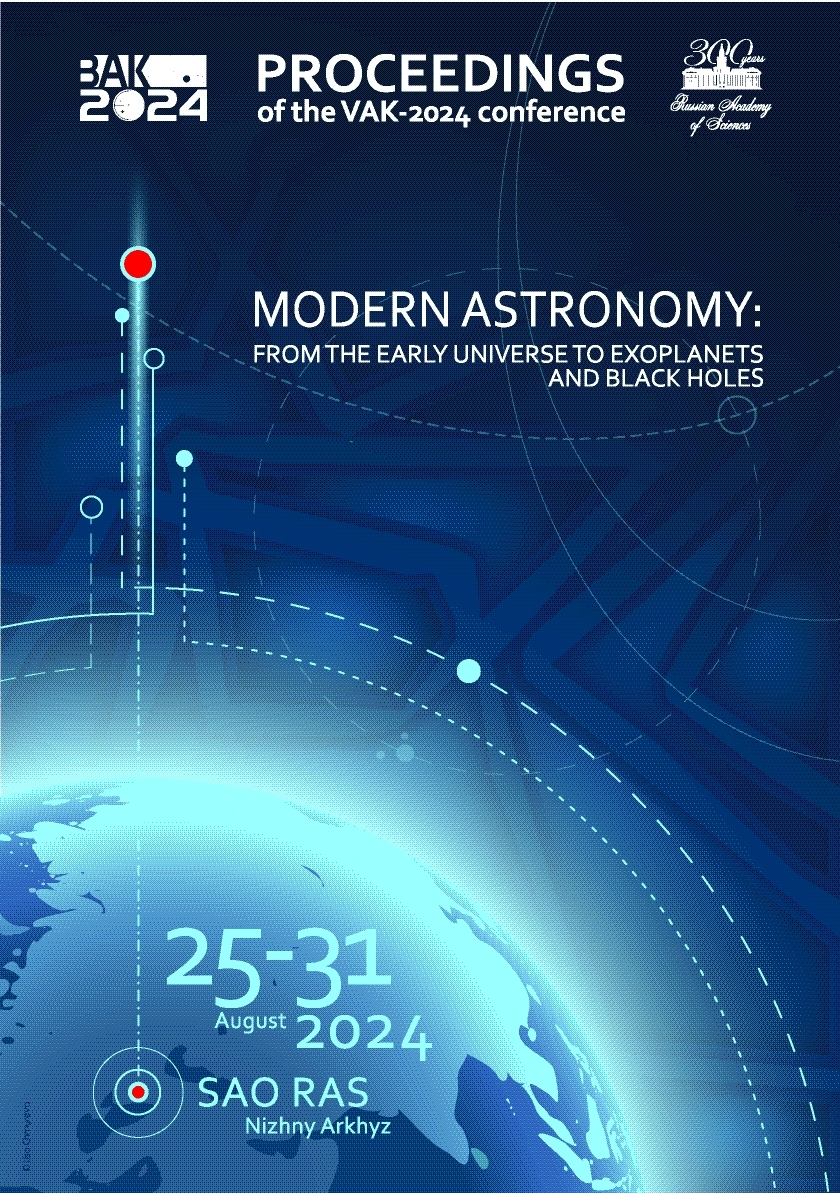UDC 53
UDC 520
UDC 521
UDC 523
UDC 524
UDC 52-1
UDC 52-6
CSCSTI 41.00
CSCSTI 29.35
CSCSTI 29.31
CSCSTI 29.33
CSCSTI 29.27
CSCSTI 29.05
Russian Classification of Professions by Education 03.06.01
Russian Classification of Professions by Education 03.05.01
Russian Classification of Professions by Education 03.04.03
Russian Library and Bibliographic Classification 2
Russian Library and Bibliographic Classification 223
Russian Trade and Bibliographic Classification 614
Russian Trade and Bibliographic Classification 6135
BISAC SCI004000 Astronomy
BISAC SCI005000 Physics / Astrophysics
The published data on exotic red flares (RFs) obtained using optical/IR photometry was for the first time gathered and discussed in this paper. To date, the RFs have been observed: (a) in IR space missions (1–2 yr long IR brightening observed using WISE/NEOWISE and Spitzer in NGC 2547-ID8, HD 166191, WD 0145+234, and some others systems); (b) in five optical systems with the normal stars (UU CrB, AZ Ori, FF Ori, IX Oph, CU Cnc; three of the five systems are binaries; seven single flares were observed in 1980–2009 having a 1-hour average duration, an amplitude up to $2^{\rm m}$, and an energy up to $10^{39}$ erg); (c) in three optical/hi-energy systems with a compact object (V404 Cyg, MAXI J1820+070, Swift J1858.6$-$0814; all the systems are binaries hosting a black hole or a neutron star as a component; a ``forest'' of tens of flares was observed, the flares having a subsecond duration, an amplitude up to $1\,.\!\!^{\rm m}6$, and an energy of the order of $10^{36}$ erg/s); (d) in the near-IR range in the 2MASS stars (hundreds of flares were found based on the statistical study of more then 1300 2MASS M dwarfs). The RFs are suggested to be produced by a collisional impact and destruction of asteroid-like bodies in exosystems. All the above data independently supports an idea that exotic red flares are actually a real and well-distributed phenomenon. Undoubtedly, the RFs serve more deeper and wider investigation, keeping in mind their direct connection to the manifestation of asteroids in exosystems.
stars: flare, planetary systems; minor planets, asteroids: general
1. Davenport J.R.A., Becker A.C., Kowalski A.F., et al. 2012, ApJ, 748, p. 58
2. Ferlet R., Hobbs L.M., Vidal-Madjar A.V., 1987, A&A, 185, p. 267
3. Gandhi P., Littlefair S.P., Hardy L.K., et al., 2016, MNRAS, 459, p. 554
4. Gandhi P., Paice J.A., Littlefair S.P., et al., 2018, Astronomer's Telegram, 11437
5. Gershberg R.E., 2015, Activity of solar-type main-sequence stars, Antikva, Simferopol
6. Ibrahimov M.A., 2019, INASAN Science Reports, 4, p. 199
7. Ibrahimov M.A., 2020, Ground-Based Astronomy in Russia. 21st Century, Proc. All-Russian Conf., ed. I.I. Romanyuk, I.A. Yakunin, A.F. Valeev, D.O. Kudryavtsev, p. 288
8. Ibrahimov M.A., 2022, Astronomy at the Epoch of Multimessenger Studies, Proc. All-Russian Astron. Conf. (VAK-2021), ed. A.M. Cherepashchuk et al., p. 233
9. Jiang L.Q. and Qian S.B., 2011, ASP Conference Series, 451, p. 163
10. Kiefer F., Lecavelier des Etangs A., Boissier J., et al., 2014, Nature, 514, 7523, p. 462
11. Melikian N.D., Chavushian H.S., Natsvlishvili R.Sh., et al., 1984, IBVS, 2622
12. Meng H.Y.A., Su K.Y.L., Rieke G.H., et al., 2014, Science, 345, p. 1032
13. Mirzoyan L.V., Chavushyan O.S., Melikyan N.D., et al., 1983, Astrophysics, 19, p. 411
14. Olson E.C., 1980, IBVS, 1825
15. Paice J.A., Gandhi P., Dhillon V.S., et al., 2018, Astronomer's Telegram, 12197
16. Paice J.A., Gandhi P., Shahbaz T., et al., 2019, MNRAS, 490, p. L62
17. Rieke G.H., Su K.Y.L., Melis C., et al., 2021, ApJ, 918, p. 71
18. Shahbaz T., Paice J.A., Rajwade K.M., et al., 2023, MNRAS, 520, p. 542
19. Strom P.A., Bodewits D., Knight M.M., et al., 2020, PASP, 132, id. 101001
20. Su K.Y.L., Jackson A.P., Dong R., et al., 2018, LPI Contributions, 2107, id. 2025
21. Su K.Y.L., Jackson A.P., Gaspar A., et al., 2019, AJ, 157, p. 202
22. Su K.Y.L., Kennedy G.M., Schlawin E., et al., 2022, ApJ, 927, p. 135
23. Swan A., Farihi J., Su K.Y.L., et al., 2024, MNRAS, 529, p. L41
24. Swan A., Kenyon S.J., Farihi J., et al., 2021, MNRAS, 506, p. 432
25. Wang T.-G., Jiang N., Ge J., et al., 2019, ApJ Lett., 886, id. L5
26. Zakirov M.M., 1993, IBVS, 3925
27. Zakirov M.M., 1996, Astronomy Letters, 22, p. 593





